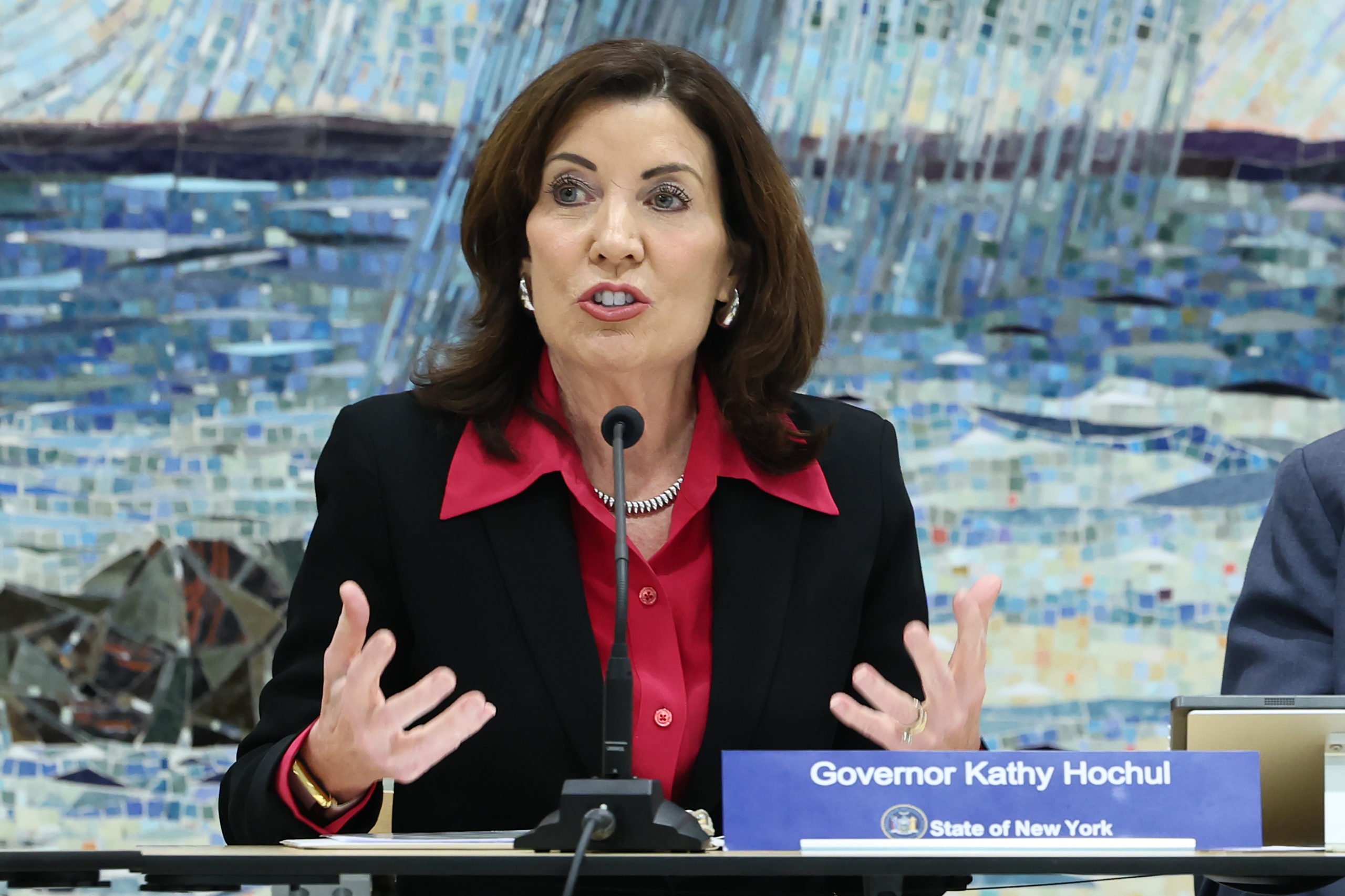New York’s electric grid is facing a growing reliability crisis as demand for power surges while fossil fuel plants are forced offline thanks to the state’s green energy mandate, according to a new report by the state’s grid operator.
As New York pushes toward its 2040 zero-emissions mandate, the state’s grid operator warned in a Monday report that forcing reliable fossil fuel generation into premature retirement could destabilize the power system if conditions are right. NYISO says the state should consider adding fossil fuel-fired generation to avoid the dual risks of aging infrastructure and rising demand, warning that green energy sources cannot yet provide the reliability needed to consistently meet the state’s power needs.
“Strong reliability margins enable the grid to meet peak demand and respond to sudden disturbances and avoid outages,” NYISO President and CEO Rich Dewey wrote in the report’s opening letter. “As these margins narrow, consumers face greater risks of outages if the resources needed for reliability are forced out of service by policy mandates or failures associated with aging equipment.” (RELATED: This Populous Blue State Has A Green Energy Mandate. Experts Say It Threatens Grid Reliability)

Democratic New York Gov. Kathy Hochul speaks during the MTA Board’s monthly meeting at Grand Central Madison on February 26, 2025 in New York City. (Photo by Michael M. Santiago/Getty Images)
One of the most urgent threats identified in the report is the growing risk of winter blackouts. Although the demand for electricity has historically peaked in the summer in New York, NYISO projects that by the 2040s, winter will become the most energy-intensive season due to the growing use of electric heating in homes and buildings in accordance with state and municipal laws.
“If gas-fired generators cannot secure fuel during peak winter demand periods, statewide deficiencies could arise as soon as winter 2029-2030 under normal weather conditions. Considering higher demand growth or extreme winter weather conditions, deficiencies may happen years earlier,” the NYISO report states.
New York saw a glimpse of this risk during a 2022 winter storm — when several gas and dual-fuel generators failed under pressure — that demonstrated how fuel constraints and harsh weather could pose even greater threats to reliability moving forward, according to NYISO.
Some of this strain stems from New York’s 2019 “Peaker Rule,” which required the state’s oldest power plants to cut emissions or shut down, according to the NYISO report. Many of these peaker plants once provided critical backup during extreme demand, and their loss has reduced the grid’s flexibility.
The state also shut down the Indian Point nuclear power plant in 2021 under pressure from environmental groups, but it was natural gas and out-of-state imports, not wind or solar, that filled the gap, according to analysis by JP Morgan. The decision helped increase the emissions intensity of the electricity powering New York City and Long Island.
“The Governor has led by example in New York’s ongoing transition to a clean energy economy: we have one of the cleanest grids in the nation—with 50% zero-emission electricity—and are a gold standard in reliability. The Governor recognizes that we can only continue to serve as that good example if the lights stay on and costs are low, and she will use every tool at her disposal to ensure that happens,” a spokesperson for Democratic New York Gov. Kathy Hochul said in a statement to the Daily Caller News Foundation. “She is embracing an energy policy of abundance to make electricity more affordable and meet the growing demand of businesses looking to expand here—which includes her recent successful effort to save Empire Wind from the federal government’s attempt to shut it down and her commitment to responsibly catalyze the development of new energy in New York State, including new renewable and nuclear power.”
NYISO cautions that during New York’s green energy transition, fossil fuel plants will be needed to provide reliability services until newer low-emission technologies, like wind or solar, are fully developed.
The report reflects a broader national concern given that the North American Energy Reliability Corporation (NERC) warned in May that four other major grid systems serving dozens of states face similar problems. NERC warned that backup power reserves, which protect against grid emergencies, could drop to dangerously low levels during times of elevated electricity demand in tandem with wind and solar falling to generate enough power at critical moments.
The Trump administration’s Department of Energy recently acknowledged the seriousness of this risk, issuing an emergency order to delay the closure of Michigan’s J.H. Campbell coal plant due to the risk of blackouts on the vulnerable MISO grid. Energy Secretary Chris Wright said the emergency order was necessary to prevent dangerous power shortages as summer demand surges.
Notably, a massive blackout hit Spain in April, knocking out power for 600,000 people after a sudden demand surge overwhelmed a grid heavily reliant on renewables. Power grid and energy experts told the DCNF that Spain’s heavy dependence on wind and solar left its power system vulnerable to failure in the face of what should have been a minor disturbance.
NYISO did not respond to the Daily Caller News Foundation’s requests for comment.
All content created by the Daily Caller News Foundation, an independent and nonpartisan newswire service, is available without charge to any legitimate news publisher that can provide a large audience. All republished articles must include our logo, our reporter’s byline and their DCNF affiliation. For any questions about our guidelines or partnering with us, please contact licensing@dailycallernewsfoundation.org.


![Tulsi Gabbard Calls for Arrest of James Comey Over Call to Assassinate Trump [WATCH]](https://www.right2024.com/wp-content/uploads/2025/05/Tulsi-Gabbard-Calls-for-Arrest-of-James-Comey-Over-Call-350x250.jpg)


![Declaration Gaffe, Whisper Creep, and Conflicting Cancer Claims [WATCH]](https://www.right2024.com/wp-content/uploads/2025/05/Declaration-Gaffe-Whisper-Creep-and-Conflicting-Cancer-Claims-WATCH-350x250.jpg)

![Trump Drops Bombshell Video Linking Clintons to Mysterious Deaths [WATCH]](https://www.right2024.com/wp-content/uploads/2025/05/Trump-Drops-Bombshell-Video-Linking-Clintons-to-Mysterious-Deaths-WATCH-350x250.jpg)


![Bessent Exposes Media Lies About April’s Stock Market Performance [WATCH]](https://www.right2024.com/wp-content/uploads/2025/04/Bessent-Exposes-Media-Lies-About-Aprils-Stock-Market-Performance-WATCH-350x250.jpg)






